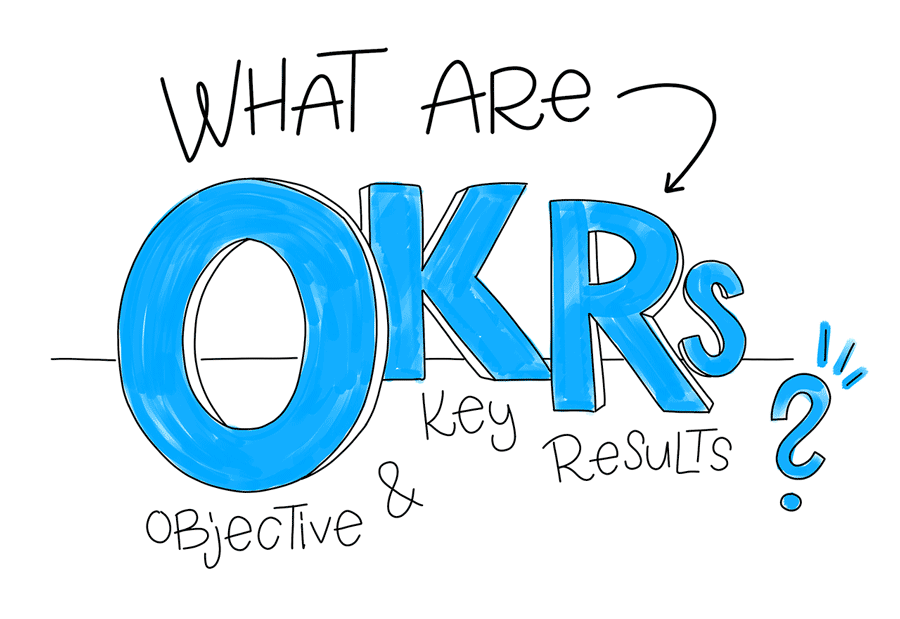OKRs Overview
OKR (Objectives and Key Results) is a goal management system. In which, businesses use OKR as a method to quantify and create specific key results in order to realize goals (objectives) within a certain period of time. Businesses can also use OKRs in combination with KPIs.
OKR was born around 2 different questions:
- Objective: Where do I want to go?
- Key Result: How do I get there?
Why did AMOBEAR choose OKRs?
The OKRs are clearly outlined
OKRs clearly show management what’s important and what goals to prioritize. It’s all very succinct, articulate in just a few lines, easily conveyed to a large number of employees at Amobear.
This is one of the dominant features of OKRs, always being clear and transparent – the main reason for us to apply OKRs in our management model. company to define its goals and key results.

OKRs help to stay connected
OKRs are implemented at different levels: individual, departmental, and corporate. The OKRs system will connect the small goals to the common mission, closely link the goals together to achieve the biggest and most important goal of the whole company.
This helps us maximize performance and achieve goals faster. Besides, OKRs process also makes employees rememberable what they did for the company. From there, I see myself as an important and inseparable link in the overall operation of Amobear.
OKRs manage ongoing goals
With CFRs tool in OKRs operation, communication, feedback activities , recognition is always happening, helping the workflow management process to continue. Tracking OKRs on a weekly, monthly, and quarterly basis to help manage ongoing goals.
Moreover, with the transparency of OKRs, the progress of implementing OKRs for individuals, departments, and companies is always public and updated in internal information channels. Thanks to that, every employee in the company can always monitor each other’s status and progress, making the spirit of OKRs pushed higher, more serious and excited.
How do we build OKRs?
For Objective:
- Each level in the organization (company, department, and individual) should have 3 to 5 goals.
- Objective needs to have a clear, specific destination that avoids ambiguity (Example: developing customer relationships at branches Nha Trang) instead of being vague (Example: developing customer relationships in the South).
- Objective should be set beyond what is normally achieved. This will create a feeling of difficulty, conquest, and a higher level of determination.
For Key Result:
- Must be measurable (Example: “Connected with 10 customers” instead of “Enhance connections with many” more customers”).
- Aggregate the small steps to accomplish a goal, so achieving the key result is more valuable than achieving the goal.
- Describe the output clearly (Example: “Submit a conversion funnel report” instead of “Analysis” conversion funnel performance”
The process of implementing OKRs at AMOBEAR:

How to build OKR is shown in the image above, including the following 4 steps:
- Hplan
In this step, businesses need to clearly define why they need OKRs, define scope, plan implementation, and define support methods.
- Implementation
At the implementation stage, awareness training is needed for employees, clarifying the link from strategy to OKRs, setting company-level goals and key results, and communication. Departments can then develop department Goals and Key Results. Note that the goals must be “challenging”, so that the departments that achieve 70% of the goals or the key results are considered “achieved”.
- Control
Decide how often to check-in, be it weekly/monthly or quarterly. Check-in meetings are an opportunity for members to discuss problems in moving toward a goal or key outcome and make adjustments as needed. Regular communication is one of the important factors to ensure the success of OKR.
- Adjustable
Review the goals and key results set and the extent to which those goals and key results were accomplished. If the goals and key results are achievable fairly easily, it may be necessary to increase the level of challenge of the goal.
Example of key goals and results in Marketing
Objective : Acquire 3,000 new users for New mobile app launched within 1 month.
Key result:
- Download rate increased by 20%, reaching 100 downloads per day.
- Rated 4.5+ at the app store
- Appeared in 4 technology magazines (Mashable, Techcrunch, PC world, Wired)
For every organization, measuring performance is important. Performance management helps to concretize goals into talking numbers. From these parameters, the management can consider the good points and the shortcomings in the operation process to make a timely improvement plan. The ultimate goal is to control and improve the organization’s operations.
